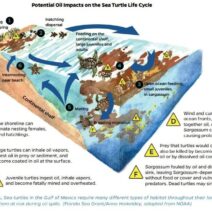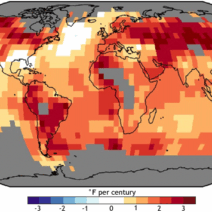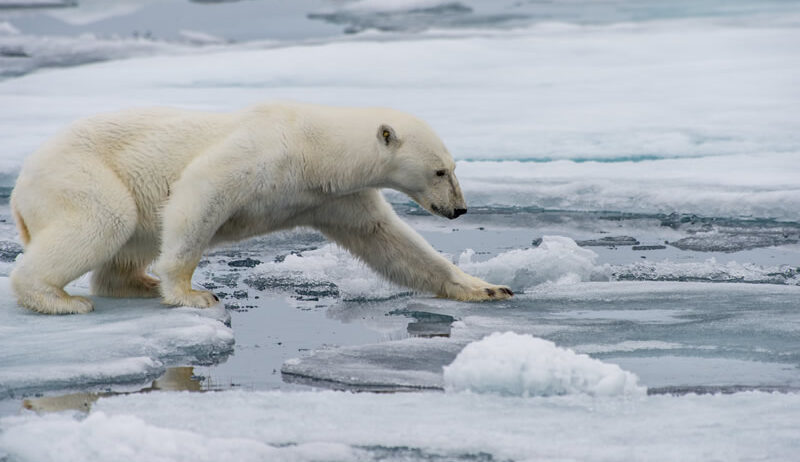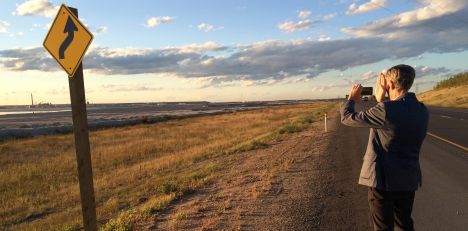As we glide through the 21st century, an inevitable query looms large: How is the very essence of our planet transforming in response to the relentless march of global warming? This phenomenon, a harbinger of ecological upheaval, invites a deeper exploration of nature’s precarious balance. What if, upon further scrutiny, we were to discover that Earth, in its silent suffering, is not only responding to climate change but might also evolve in unforeseen ways that challenge our perceptions of natural resilience?
Global warming, the consequence of anthropogenic greenhouse gas emissions, is not merely a statistical anomaly; it is a clarion call for understanding how ecosystems adapt, struggle, or dismantle under pressure. The atmospheric temperature rise, averaging close to 2 degrees Celsius since the late 19th century, casts a wide net over various biomes, creating intricate patterns of environmental alteration.
Foremost among these is the polar regions, where warming manifests most palpably. The Arctic, often dubbed the “canary in the coal mine,” is experiencing an alarming acceleration in ice loss, threatening the habitats of iconic species such as polar bears and seals. As ice shelves collapse, what will happen to the delicate interdependencies of marine ecosystems? Will these apex predators adapt, or will they face extinction as their hunting grounds vanish into the sea?
Further south, the implications of global warming ripple through the tundra and boreal forests, regions that once stood stoically at the brink of human encroachment. The thawing permafrost not only releases methane—a potent greenhouse gas—but also reveals long-buried secrets of Earth’s climatic past. What stories do these pantomimes of decay tell us about our thermodynamic future? Each defrosted layer speaks of a world that once thrived, now morphing into an archetype of loss.
Transitioning from the ice-clad realms to the verdant expanses of the tropics, we observe a different narrative. Coral reefs, the vibrant cities beneath the waves, are succumbing to the stressors of elevated sea temperatures and ocean acidification. These colorful habitats, home to myriad marine species, are also the fundamental bases for coastal livelihoods. As coral bleaching becomes more prevalent, one must ponder: are we on the brink of losing some of the most biologically diverse ecosystems known to humankind? What actions can we undertake to salvage these underwater metropolises from irreversible degradation?
Inland, forests are undergoing their own metamorphosis. The rise in temperature is exacerbating droughts, leading to increased susceptibility to wildfires—an alarming transformation that alters both the landscape and its inhabitants. The charred remnants tell tales of displacement for numerous animals, ranging from small mammals to large predators. How might these species adapt or migrate in search of suitable habitats? Will they find solace in unfamiliar territories, or will they succumb to the pressures of habitat loss and fragmentation?
Another striking impact of climate change is seen in the shifting patterns of flora and fauna. Phenology, the study of periodic plant and animal life cycle events, has revealed alarming trends: many species are blooming earlier, migrating sooner, or altering their breeding patterns. What ensues when these patterns clash with established life cycles of other organisms? The intricate web of ecological relationships could face disintegration as availability of food sources fluctuates alongside the adaptations of various species. Could the bloom of one flower lead to the decline of another, cascading through the ecosystem like a house of cards?
The challenge posed by global warming extends beyond the tangible; it also involves human perception and responsibility. Cities are transforming under pressure from increased heat waves, flooding, and changing weather patterns. Urban planning must adapt to minimize the heat sink effects, reduce emissions, and create green spaces that foster biodiversity within metropolitan settings. How do we reconcile our development aspirations with a sustained commitment to environmental stewardship? What radical changes in policy and public consciousness are necessary for our future coexistence?
As we grapple with these daunting realities, we must also remain steadfast in our pursuit of solutions. Renewable energy sources—solar, wind, and geothermal—hold the potential to decouple our reliance on fossil fuels. Conservation efforts, habitat restoration, and reforestation initiatives serve as practical antidotes to rampant ecological degradation. Moreover, education and activism empower individuals and communities to forge ahead in preserving the Earth’s shifting face.
In essence, as we navigate this intricate web of consequences wrought by global warming, we must foster an innate adaptability akin to the ecosystems we strive to protect. We inhabit a world where nature’s resilience is constantly tested. The question then remains: Are we equipped to alter the trajectory of our planet’s fate? As stewards of Earth, the onus rests upon our shoulders to meet this challenge head-on, igniting a collective response that cherishes the vitality of our environment—transformative, yet vulnerable—and allow it to thrive amidst adversity.







